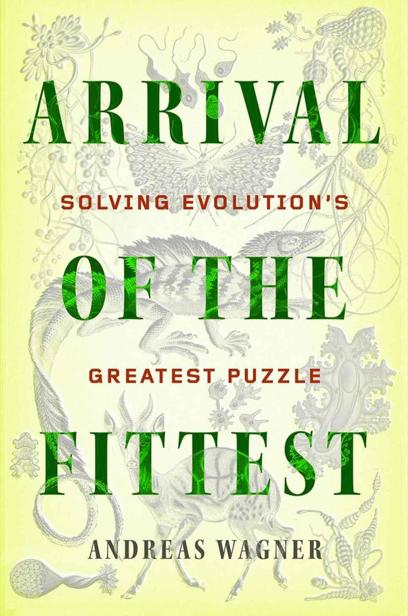
Arrival of the Fittest
Solving Evolution's Greatest Puzzle
کتاب های مرتبط
- اطلاعات
- نقد و بررسی
- دیدگاه کاربران
نقد و بررسی

June 30, 2014
Wagner, a professor at the Institute of Evolutionary Biology and Environmental Studies at the University of Zurich addresses the intriguing and long-standing question of how such a wide diversity of life arose. He doesn’t dispute the importance of natural selection, but argues that natural selection can only operate on the variability that exists; something more must permit nature to spread out in the manner it has. He concludes that mechanisms that lead to innovation are most important; innovations upon which natural selection can operate. Wagner discusses both the microbial and the multicellular world. In the former, horizontal gene transfer, the sharing of genetic material among individuals of many species, allows new genetic combinations to arise remarkably quickly. These are interesting results, presented clearly, but nothing new. His work becomes more remarkable when he discusses research, conducted largely in his laboratory, that demonstrates the number of ways there are to solve critical metabolic problems. One of his striking findings is that the mechanisms responsible for life are surprisingly robust: iterative mutations, far more often than anyone expected, can maintain and at times enhance an organism’s functionality. Wagner notes that “we can predict innovability even if we cannot predict individual innovations,” and his work further undercuts any arguments for intelligent design.

Starred review from September 1, 2014
Wagner (Evolutionary Biology and Environmental Studies/Univ. of Zurich; The Origins of Evolutionary Innovations, 2011, etc.) lucidly explores the natural principles that accelerate life's ability to innovate and thus evolve. "How does nature bring forth the new, the better, the superior?" asks the author. "How does life create?" Since it is exceedingly complex, he takes a winding road to approach his goal, but he has the gift of J.B.S. Haldane and Loren Eiseley in that he never slips past his audience's grasp. Wagner is there with readers throughout the journey, from modern synthesis, with its emphasis on the genotype, to evolutionary developmental biology, which sought to "integrate embryonic development, evolution, and genetics," to the relationship between genotype and phenotype, to nature's creativity, active before sentient life existed. The author clearly reveals how organic molecules could have evolved from inorganic matter, how catalysts give metabolism a kick in the pants, the wonders of deep-sea vents and the otherworldly beauty of the citric acid cycle's creating two molecules from one. Even if we do not know how life evolved in all its complexity, we do know that innovation needn't be created from scratch to have profound effects: Small changes in amino acids allow geese to fly higher, cod to swim deeper and eyes to see color, just as they allow bacteria to become resistant to antibiotics and cells to become resistant to cancer drugs. From the vast library of possible amino acid strings-"hyperastronomical" in number-we find different string arrangements capable of doing the same job and genotype networks "ideal for exploring the library, helping populations to discover texts with new meaning while preserving old and useful meaning." In this swarming complexity, nature is like Einstein's hair, which "doesn't just tolerate disorder. It needs some disorder to discover new metabolisms, regulatory circuits, and macromolecules-in short, to innovate." A book of startling congruencies, insightful flashes and an artful enthusiasm that delivers knowledge from the inorganic page to our organic brains.
COPYRIGHT(2014) Kirkus Reviews, ALL RIGHTS RESERVED.

July 1, 2014
The author (evolutionary biology, Univ. of Zurich; Paradoxical Life: Meaning, Matter, and the Power of Human Choice) is a firm believer in Charles Darwin's theory of natural selection and with this book presents a synthesis of recent research on genetics, evolution, and molecular biology to explain where the innovation that fuels natural selection originates. Covering some of the same material in his earlier, more detailed textbook, The Origins of Evolutionary Innovations: A Theory of Transformative Change in Living Systems, Wagner starts with the history of evolutionary thought, the observations that were made prior to Darwin, and the post-Darwin research that led to the discovery of DNA. The author is especially interested in the mechanisms of metabolism and uses mathematics and computation to further analyze the way chemical reactions occur. Wagner concludes that the innovation needed in genes to fuel natural selection can be explained by these factors. VERDICT This well-written, clear analysis of current research will be of interest to those who want a better understanding of the mechanisms of evolution.--Margaret Henderson, Midlothian, VA
Copyright 2014 Library Journal, LLC Used with permission.

























دیدگاه کاربران